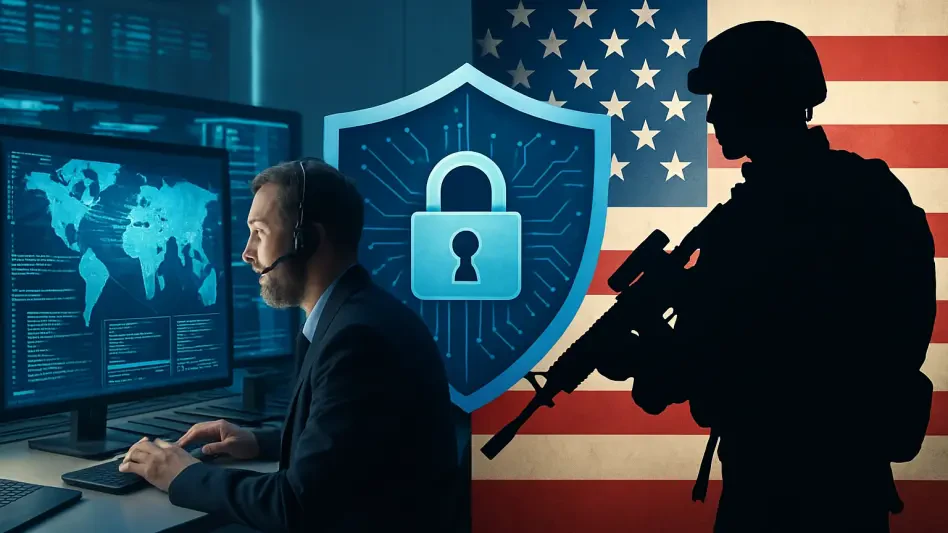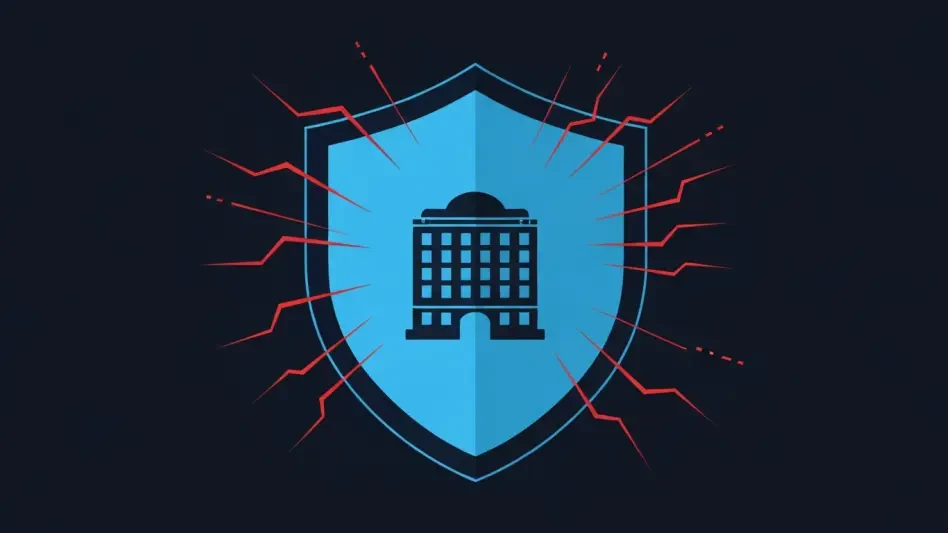In a decisive move to bolster cybersecurity across its sprawling network of contractors, the Department of Defense (DoD) unveiled the Cybersecurity Maturity Model Certification (CMMC) Procurement Final Rule on September 10, 2025. Effective from November 10, 2025, this regulation imposes stringent cybersecurity mandates on contractors and subcontractors under the Defense Federal Acquisition Regulation Supplement (DFARS). Building on the foundational CMMC Program Rule established in October 2024, the new rule aims to protect sensitive unclassified data, including Federal Contract Information (FCI) and Controlled Unclassified Information (CUI), within the defense industrial base (DIB). This development marks a significant shift in how cybersecurity is prioritized in federal contracting, affecting businesses of all sizes that engage with the DoD. The implications are far-reaching, reshaping contract awards and management while raising the bar for data protection in an era of escalating cyber threats. Delving into the specifics of this rule reveals its transformative potential for the federal supply chain.
Defining the Core of the CMMC Procurement Framework
The CMMC Procurement Final Rule stands as a critical component of the DoD’s broader strategy to secure sensitive information handled by its contractors. Anchored in the CMMC Program Rule, which became effective on December 16, 2024, this regulation introduces a structured, tiered system of cybersecurity standards categorized into three levels—Level 1, Level 2, and Level 3. Each level corresponds to the sensitivity of the data being processed, with requirements enforced through specific DFARS clauses such as 252.204-7021. Contractors must achieve compliance through varying methods, including self-assessments for lower levels or third-party and government evaluations for higher ones. The rule targets all DoD contracts involving FCI or CUI on contractor systems, though exemptions apply for contracts solely involving commercially available off-the-shelf (COTS) items. This framework underscores a fundamental shift toward verifiable cybersecurity accountability, ensuring that data protection aligns with the risks associated with specific contracts.
Beyond its structural elements, the rule’s scope signals a comprehensive approach to safeguarding the federal supply chain. Its phased implementation, beginning on November 10, 2025, provides a gradual integration of these standards into DoD contracts, allowing contractors some initial flexibility to adapt. This measured rollout acknowledges the diverse readiness levels among businesses, particularly smaller entities that may face resource constraints. However, the overarching goal remains clear: to establish a robust defense against cyber threats by mandating that contractors meet defined security benchmarks. This initiative not only protects critical information but also sets a precedent for how cybersecurity is embedded into procurement processes. The emphasis on tiered certifications reflects a nuanced balance between operational feasibility and the urgent need to shield sensitive data from increasingly sophisticated attacks, positioning the rule as a cornerstone of modern defense contracting.
Navigating the Implementation Timeline and Obligations
The implementation of the CMMC Procurement Final Rule unfolds over a carefully planned timeline to ease the transition for contractors. From November 10, 2025, through November 10, 2028, program managers and requiring activities hold discretion over whether to incorporate CMMC requirements into new solicitations and contracts. After 2028, these standards become mandatory for all relevant agreements involving FCI or CUI, establishing a firm deadline for full compliance. This phased approach mitigates immediate disruption, giving businesses time to prepare for the rigorous cybersecurity expectations. However, the clock is ticking, and contractors must strategically plan to meet these requirements or risk exclusion from future DoD opportunities. The gradual enforcement highlights the DoD’s recognition of the challenges involved while maintaining a resolute commitment to enhancing data security across its contracting network.
Alongside the timeline, the rule imposes strict contractual obligations that reshape how agreements are managed. Contracting officers are now tasked with ensuring that no contract is awarded, nor options exercised, without verified CMMC certification or self-assessment at the required level, documented in the Supplier Performance Risk System (SPRS). An additional layer of complexity arises from the rule’s allowance for integrating CMMC requirements into existing contracts, particularly during option periods, at the discretion of program offices. This flexibility demonstrates the DoD’s intent to embed cybersecurity standards into ongoing work wherever feasible, ensuring that even current engagements align with heightened security goals. Contractors must remain vigilant, as failure to comply could halt contract extensions or modifications, emphasizing the critical need for proactive preparation in meeting these evolving demands.
Updates and Responsibilities Shaping Contractor Compliance
Following extensive public input, with 97 respondents providing feedback on the proposed rule, the DoD introduced several refinements in the final CMMC Procurement Rule to enhance clarity and practicality. Key terms such as FCI and Plan of Action and Milestones (POA&M) have been aligned with existing regulations for consistency, reducing ambiguity for contractors navigating compliance. A notable update limits conditional status for Levels 2 and 3 to a maximum of 180 days, compelling businesses to address security gaps swiftly and achieve full certification. These adjustments reflect a responsive approach by the DoD to streamline the compliance process while maintaining rigorous standards, ensuring that contractors have clear guidance on meeting expectations. The focus on precise definitions and timelines aims to minimize confusion and foster a more manageable path to adherence.
Contractors, however, face a host of new responsibilities under this rule that demand careful attention. Beyond achieving the necessary CMMC level, they must submit compliance affirmations through SPRS, confirming continuous adherence to security standards. Flow-down clauses extend these obligations to subcontractors, who are also required to report their status in SPRS, yet prime contractors lack direct access to this data, creating a verification challenge. While certain notification burdens, such as reporting minor lapses, were removed after public feedback, the emphasis on sustained compliance remains unwavering. Contractors must establish robust internal mechanisms to monitor and document their cybersecurity posture, as well as develop independent methods to confirm subcontractor adherence. This intricate web of duties underscores the rule’s intent to create a secure supply chain, even as it places significant administrative and operational demands on all parties involved.
Balancing Benefits and Hurdles in the Defense Supply Chain
The DoD positions the CMMC Procurement Final Rule as a vital tool to strengthen trust in contractors’ ability to protect sensitive information, with benefits rippling across the defense supply chain. By enforcing tiered cybersecurity requirements, the rule ensures that FCI and CUI are safeguarded at levels commensurate with their sensitivity, reducing the risk of data breaches that could compromise national security. Enhanced protection of intellectual property also promises economic advantages by shielding critical innovations from cyber threats, potentially fostering greater confidence in the U.S. defense sector. This proactive stance addresses the growing sophistication of cyberattacks, aiming to create a resilient network of contractors capable of withstanding digital risks. The anticipated outcome is a fortified supply chain that not only secures military interests but also contributes to broader economic stability through reduced vulnerabilities.
Despite these advantages, significant challenges loom for contractors, particularly small and medium-sized enterprises, as they grapple with the rule’s demands. The financial and resource costs of obtaining and maintaining CMMC certification can be substantial, posing a barrier for businesses with limited budgets. Continuous compliance affirmations add to the workload, requiring ongoing investment in cybersecurity infrastructure and expertise. The phased implementation offers temporary relief, but the mandatory enforcement after 2028 looms as a daunting deadline. Additionally, the inability of prime contractors to directly verify subcontractor compliance data complicates supply chain oversight, necessitating alternative assurance mechanisms. These hurdles highlight the tension between the imperative for heightened security and the practical realities of implementation, requiring contractors to strategically allocate resources to meet the rule’s expectations without compromising operational viability.
Reflecting on Strategic Next Steps for Cybersecurity
Looking back, the rollout of the CMMC Procurement Final Rule marked a defining moment in the DoD’s efforts to embed robust cybersecurity within its contractor ecosystem. Its structured approach, with tiered certification levels and phased enforcement, aimed to fortify the defense supply chain against ever-evolving cyber threats while protecting vital unclassified information. The rule’s responsiveness to public feedback, evident in refined definitions and adjusted requirements, demonstrated a commitment to balancing security imperatives with practical considerations, even as compliance challenges persisted for many in the industry.
Moving forward, contractors were encouraged to prioritize early preparation by assessing their current cybersecurity posture and identifying gaps relative to CMMC standards. Collaborating with industry peers and leveraging available resources could ease the transition, while the DoD was expected to continue providing guidance to support smaller entities. Exploring innovative solutions for supply chain verification remained essential to address oversight gaps. This rule set the stage for a new era of accountability, urging all stakeholders to adapt proactively to sustain trust and security in defense contracting.








